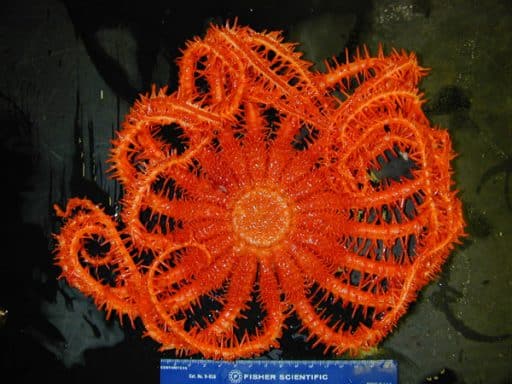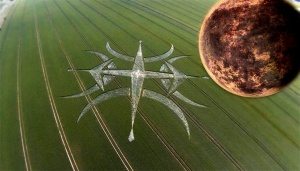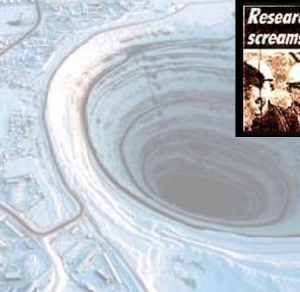Wonder why we haven’t explored nearly 80% of the ocean? How can something so relevant and vast be one of the greatest mysteries known to man? The ocean just may be our alien life on earth that we keep overlooking simply because a scientist discovered it and not a random drone circulating around area 51. Aliens may not be the 2 legged, cone headed creatures we imagine but are instead the oddities we see within the deepest parts of the sea. Why walk amongst us as an alien lifeform when you can swim?

We’ve been working hard to create the best UFO, Alien & Paranormal stories for several years now and we’re excited to share that we just recently launched our youtube channel. We’re releasing one new alien, ufo video each day. Make sure to head over to the UfoHolic youtube channel, subscribe and tap the bell in the top right for notifications to see new videos when they come out. Subscribe to our Ufo videos by clicking here.
Methanogenic Archaeon
Microbe

Methanogenic Archaeon are found in environments as extreme as the searing hot springs in Yellowstone National Park and the acidic, metal-rich waters that drain out of mines. Scientists have theorized these form of Microbes may be the key to understanding what life on mars may be like for living creatures.
Extraterrestrial Characteristics:
- Survives without oxygen by combining hydrogen and carbon dioxide.
- Make the energy it needs by emitting methane as a waste product.
- Detected traces of methane in Enceladus’s plumes.
Glass Sponge
Hexactinellida

Glass sponges are animals commonly found in the deep ocean. Their tissues contain glass-like structural particles, called spicules, that are made of silica. Some species of glass sponges produce extremely large spicules that fuse together in beautiful patterns to form a “glass house”—a complex skeleton that often remains intact even after the sponge itself dies.

Extraterrestrial Characteristics:
- Elongated thin body like a beanstalk and a bulbous head.
- The head had holes in the middle that appears to mimic a pair of alien eyes.
- Advhena magnifica, specifically, has been dubbed by scientist the “E.T. sponge.”
Giant Sea Squid
Magnapinna

Bigfin squids are a group of rarely seen cephalopods with a distinctive morphology. They are placed in the genus Magnapinna and family Magnapinnidae. Although the family is known only from larval, paralarval, and juvenile specimens, some authorities believe adult specimens have also been seen.
Extraterrestrial Characteristics:
- The arms and tentacles were of the same length and looked identical.
- The appendages were also held perpendicular to the body, creating the appearance of strange “elbows”.
- The length of the elastic tentacles (up to 15–20 times the mantle length.)
- Estimates based on video evidence put the total length of the largest specimens at 8 metres (26 ft) or more.
- The fins are extremely large, being proportionately nearly as big as those of bigfin squid larvae.
Vent Shrimp
Rimicaris exoculata

The Vent Shrimp (Rimicaris exoculata), also known as the hydrothermal shrimp, hydrothermal vent shrimp, deep sea shrimp, or deep-sea hydrothermal vent shrimp, live in a deep underwater abyss with zero sunlight (energy source used for food production) and crushing pressure, where they feed near hydrothermal jets that spew toxic chemicals harmful to most living organisms.
Extraterrestrial Characteristics:
- Eats and survives in an extreme environment with no light.
- Uses a chemical process called chemosynthesis to generate its own food.
- Bacteria on the vents use the expelled minerals and chemicals and turn it into organic matter.
Brisingidae Starfish

The Brisingidae are a family of starfish found only in the deep sea. They inhabit the Atlantic and Pacific Oceans at abyssal depths, and can also be found in the Southern Ocean and around Antarctica at slightly shallower depths. They were was named after Brísingamen, a necklace belonging to Freya from Norse mythology that was stolen by Loki and hidden in the sea.
Extraterrestrial Characteristics:
- They have a small, Ophiurida-like disc, demarcated from the arms.
- They raise their arms vertically above their discs to filter feed on suspended organic particles drifting past.
- Members of this family live on hard surfaces at depths between 100 and 4,500 m (300 and 14,800 ft).
Frilled Shark
Chlamydoselachus anguineus

The frilled shark is considered a living fossil, because of its primitive, anguilliform (eel-like) physical traits, such as a dark-brown color, amphistyly (the articulation of the jaws to the cranium), and a 2.0 m (6.6 ft)–long body, which has dorsal, pelvic, and anal fins located towards the tail.
Extraterrestrial Characteristics:
- Dwells within an atmosphere similar to Mars.
- Extended dorsal fins.
- Jaws resembles that of a large snake but can eat nearly 3x its weight.
Anglerfish
(Lasiognathus dinema)

LASIOGNATHUS DINEMA is a species of wolftrap angler found in the deep waters of the northern Gulf of Mexico. It is found at depths of around 3,280 to 4,900 feet (1,000 to 1,500 meter).[2]
Extarterrestrial Characteristics:
- This species has an illicium that is 15-47mm long.
- The illicium is surrounded by a posterior extension that helps protect it and has a this translucent exterior.
- Preys in complete darkness.
Black Dragonfish
Idiacanthus

Idiacanthus atlanticus is found in subtropical to temperate habitats, mainly in the southern hemisphere .Idiacanthus fasciola is more widely distributed, found in both North and South Atlantic as well as the Indo-Pacific and other areas.
Extraterrestrial Characteristics:
- Black Dragonfishes are long, slender fishes that are sexually dimorphic.
- Long fang-like teeth
- Venomous spine
Sea Cucumber
Halloween Holothurian

Sea cucumbers are echinoderms from the class Holothuroidea. They are marine animals with a leathery skin and an elongated body containing a single, branched gonad. Sea cucumbers are found on the seafloor worldwide.
Extraterrestrial Characteristics:
- Sea cucumbers have false spines to visually ward off predators.
- Their bodies produce a bad-tasting detergent molecules, called saponins when attacked by predators.
- Sea cucumbers eject certain internal organs when threatened through their head or rear. The organs respawn quite rapidly.
Could this be the reason why our deep sea creatures are starting to look more and more extraterrestrial in origin? Let us know what you think after watching:
People Are Opening Their 3rd Eye & Grounding With Hape
Use the discount code healthywildfree for 10% off your order!
Recommended Reading:
The Top 3 Ways To Open Your 3rd Eye
Tobacco Has Been Demonized By The Elites
The Strange Powder That Shamans Use To Connect With UFO & Aliens
Why Are UFOlogists Blowing Tobacco Herb Mixes Up Their Nose?









